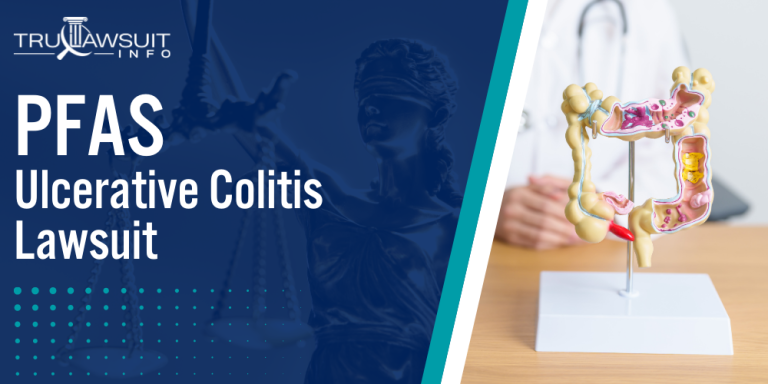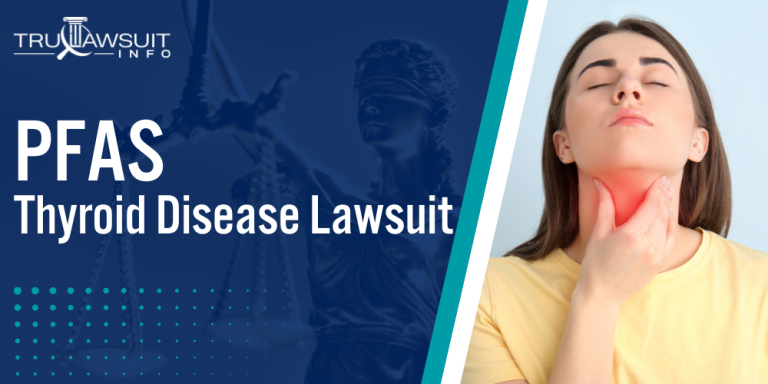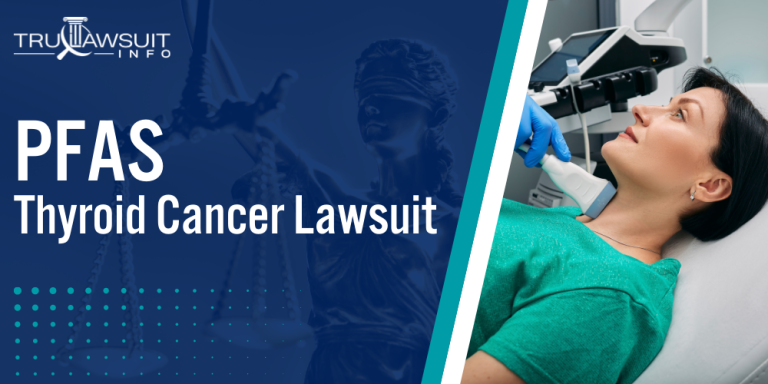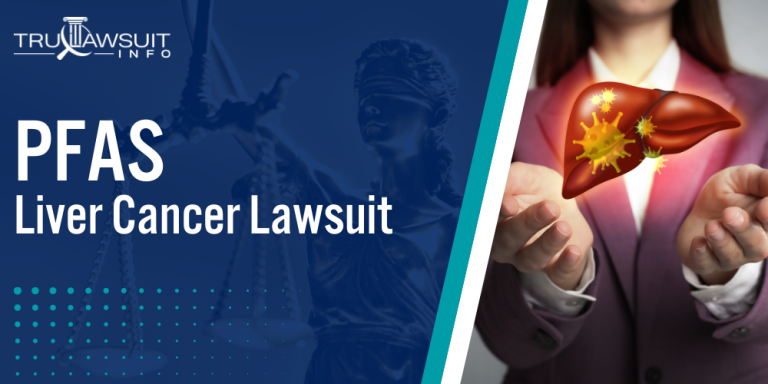PCB Contaminated Sites: Identification & Prioritization Strategies
Key Takeaways:
- PCBs are persistent organic pollutants that pose significant environmental and health risks due to their bioaccumulation in the food chain and resistance to natural degradation processes.
- PCB contamination is primarily caused by improper handling, disposal, and manufacturing practices, such as inadequate containment measures, spills, and improper waste disposal.
- Effective management of PCB-contaminated sites requires comprehensive site investigation techniques, risk-based approaches to prioritize cleanup efforts, stakeholder engagement, innovative remediation technologies, and careful planning for site redevelopment.
Overview of PCB Contaminated Sites
On this page, we’ll discuss the challenges posed by PCB contaminated sites, processes of identifying and remediating PCB contamination, potential legal and financial implications of PCB-contaminated sites, and much more.
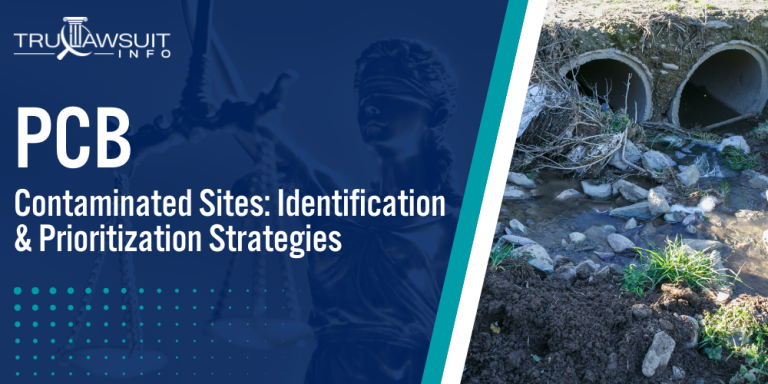
Intro to PCB Contaminated Sites
Key aspects of PCB-contaminated sites include, but are not limited to:
- Site Identification: Identifying PCB-contaminated sites involves a combination of historical research, environmental sampling, and data analysis to determine the extent and nature of the contamination.
- Risk Assessment: Once a site is identified, a comprehensive risk assessment is conducted to evaluate the potential impacts on human health and the environment, considering factors such as exposure pathways and sensitive receptors.
- Remediation Strategies: A remediation plan is developed based on the risk assessment to clean up the PCB contamination and mitigate potential risks. Remediation strategies may include excavation, dredging, capping, or in-situ treatment.
- Legal and Financial Implications: PCB-contaminated sites often involve complex legal and financial issues, such as determining responsible parties, allocating cleanup costs, and addressing potential legal liabilities.
You or a loved one living near or employed at PCB-contaminated sites may qualify for compensation.
Contact Tru Lawsuit Info today using the chat on this page to pursue compensation in your PCB claim.
Table of Contents
PCB Contaminates Sites: Historical Practices
Polychlorinated biphenyls (PCBs) have left a lasting legacy of environmental contamination.
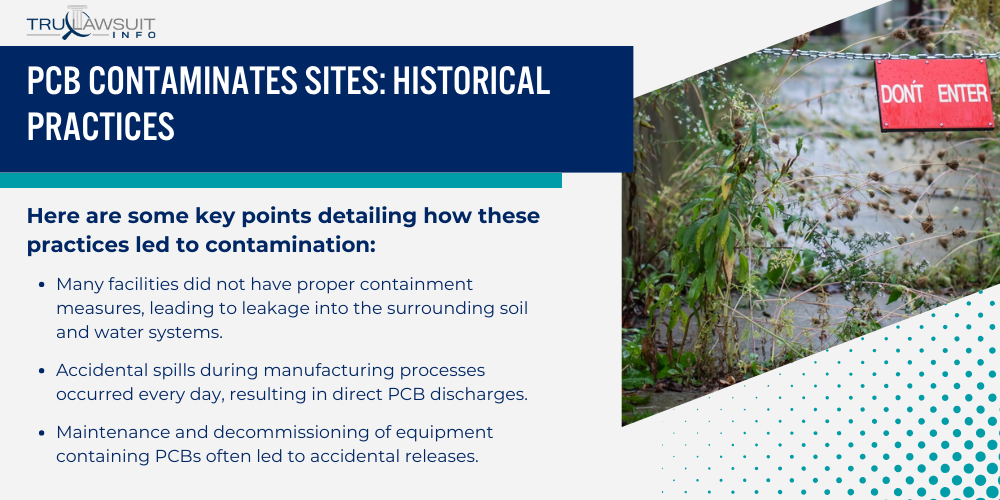
Various industrial practices, primarily before PCBs were regulated, contributed substantially to the widespread presence of these toxic substances in the environment.
Industrial Facilities Manufacturing or Using PCBs
Industrial facilities that either manufacture or incorporate PCBs into the production of electrical equipment are primary sources of PCB contamination.
PCBs were valued for their chemical stability and insulating properties in electrical apparatus such as transformers and capacitors.
Here are some key points detailing how these practices led to contamination:
- Many facilities did not have proper containment measures, leading to leakage into the surrounding soil and water systems.
- Accidental spills during manufacturing processes occurred every day, resulting in direct PCB discharges.
- Maintenance and decommissioning of equipment containing PCBs often led to accidental releases.
- Before the Toxic Substances Control Act (TSCA), there were no stringent guidelines for handling or disposing of PCB-containing equipment, increasing the risk of contamination.
Improper PCB Waste Disposal Leading to Contaminated Sites
The disposal of PCB waste has been a significant challenge.
Before the TSCA and other regulations, improper disposal practices contributed to environmental contamination.
These points outline some of the disposal issues:
- Hazardous waste sites: PCB-laden waste was often disposed of alongside other chemical waste, with little to no segregation, increasing the risk of widespread soil and groundwater contamination.
- Municipal and industrial incinerators: Without proper filtration systems, these incinerators release PCBs into the air, settling onto land and water bodies.
- Electronic waste recycling sites: Improper dismantling and disposal of electronic components, which often contain PCBs, release these chemicals into the environment.
- Dumping of PCB waste in landfills not engineered to contain toxic contaminants allowed PCBs to leach into the local environment.
Environmental Media Commonly Impacted by PCB Contaminated Sites
Polychlorinated biphenyls (PCBs) have been imprinted on various environmental media.
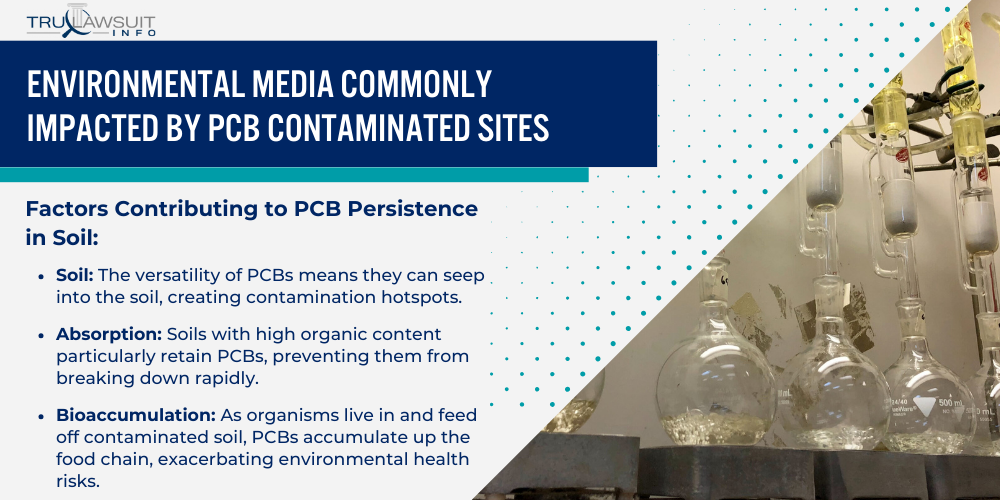
Recognizing the affected areas is essential for mitigating the risks to environmental health.
Soil and Sediment as Reservoirs for PCB Contamination
PCBs persist in the environment, and contaminated soils and sediments are long-term storage for these toxic compounds.
PCBs adhere to the organic matter in the soil, leading to extensive contamination.
Factors Contributing to PCB Persistence in Soil:
- Soil: The versatility of PCBs means they can seep into the soil, creating contamination hotspots.
- Absorption: Soils with high organic content particularly retain PCBs, preventing them from breaking down rapidly.
- Bioaccumulation: As organisms live in and feed off contaminated soil, PCBs accumulate up the food chain, exacerbating environmental health risks.
- Sediment: Water bodies receive PCBs from runoff and deposition, turning their sediments into sinks of contained PCBs.
Groundwater and Surface Water Tainted by Leaching PCBs
Groundwater and surface water become tainted when PCBs from contaminated sites leach into these resources.
Pathways of PCB Contamination in Water:
- Leaching: PCBs can leach out of contaminated sediments, contaminating groundwater.
- Surface Water: Lakes, rivers, and streams can accumulate PCBs through direct contamination or runoff from PCB-contaminated soil.
- Water Supply: This pollution can then feed into the water supply, impacting the water quality available for consumption and use.
- Contained PCBs in Aquatic Systems: Aquatic life is particularly vulnerable to PCB congeners, affecting both the organisms and those who consume them.
Movement through the environment means that even areas distant from the original contamination can be affected.
Site Investigation Techniques for Detecting PCB Contaminated Sites
Site investigation is a pivotal step in confirming and managing polychlorinated biphenyl (PCB) contaminated sites in the fight against environmental pollution.
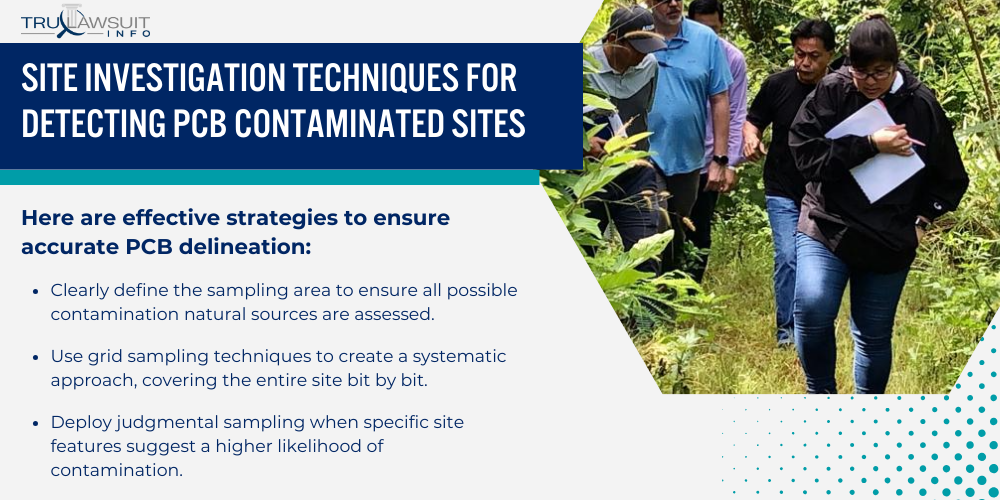
Reliable strategies and advanced tools are instrumental for accurate PCB detection and characterization, ensuring the upholding of the Environmental Protection Agency (EPA) guidelines.
Sampling Strategies to Confirm and Delineate PCB-Contaminated Sites
A comprehensive sample collection process is fundamental for assessing PCB presence.
Here are effective strategies to ensure accurate PCB delineation:
- Clearly define the sampling area to ensure all possible contamination natural sources are assessed.
- Use grid sampling techniques to create a systematic approach, covering the entire site bit by bit.
- Deploy judgmental sampling when specific site features suggest a higher likelihood of contamination.
- Engage in incremental sampling methodology (ISM) to generate a more representative understanding of the toxic substances present.
Advances in PCB Site Characterization Tools and Methods
The promotion of innovative tools and methods enhances the efficiency of site characterization.
Consider these advancements:
- Employ portable detection methods, such as PCB immunoassay kits, for field testing, which provide immediate results.
- Merge geophysical methods with soil gas surveys to indirectly assess possible PCB presence.
- Utilize High-Resolution Site Characterization (HRSC) tools to map PCB distribution in fine detail.
- Integrate Geographic Information Systems (GIS) that optimally visualize PCB spread across affected areas.
Risk-Based Approaches to Prioritizing PCB Cleanup Efforts
Assessing the risk associated with polychlorinated biphenyls (PCBs) is critical to prioritizing cleanup efforts.
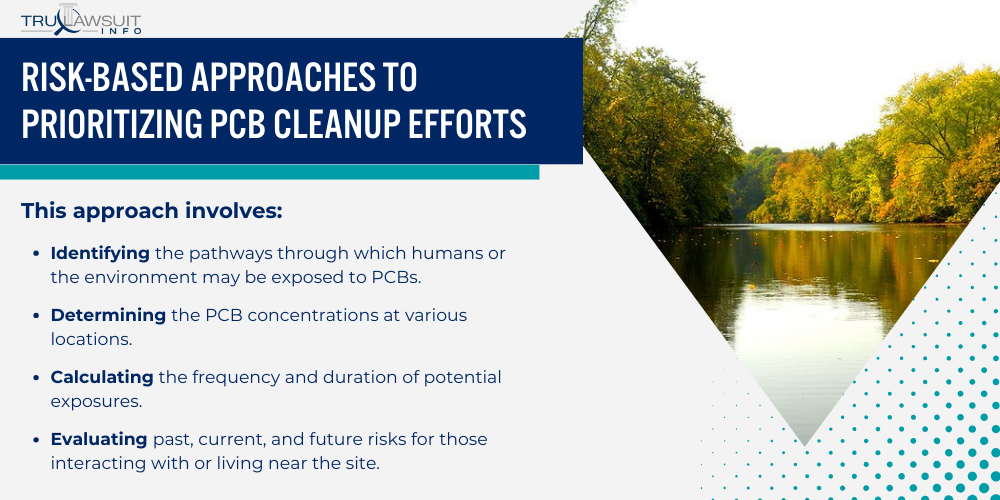
These strategies evaluate the immediate and long-term risks to the human population and environmental health, guiding remediation activities in a targeted manner.
Exposure Assessment to Identify High-Risk PCB-Contaminated Sites
Exposure assessment is the first step in distinguishing high-risk PCB sites.
This approach involves:
- Identifying the pathways through which humans or the environment may be exposed to PCBs.
- Determining the PCB concentrations at various locations.
- Calculating the frequency and duration of potential exposures.
- Evaluating past, current, and future risks for those interacting with or living near the site.
Key agencies such as the United Nations Environmental Program and the Agency for Toxic Substances and Disease Registry play a vital role in formulating these assessments to protect public health.
Factoring Ecological and Human Health Threats in PCB-Contaminated Sites
When deciding on prioritization, weighing both ecological and human health threats is vital.
By doing so, strategies become more effective in safeguarding communities and ecosystems.
Important considerations include:
- The impact of PCB exposure on local wildlife and habitats.
- The health administration’s benchmarks for acceptable PCB levels.
- Community health profiles and potential PCB-related health outcomes.
- Guidelines from institutions like the National Institute for Health aimed at minimizing health impacts.
Engaging Stakeholders in PCB Contaminated Site Decisions
When tackling PCB contamination at Superfund sites, involved parties must engage in open dialogue and information sharing.
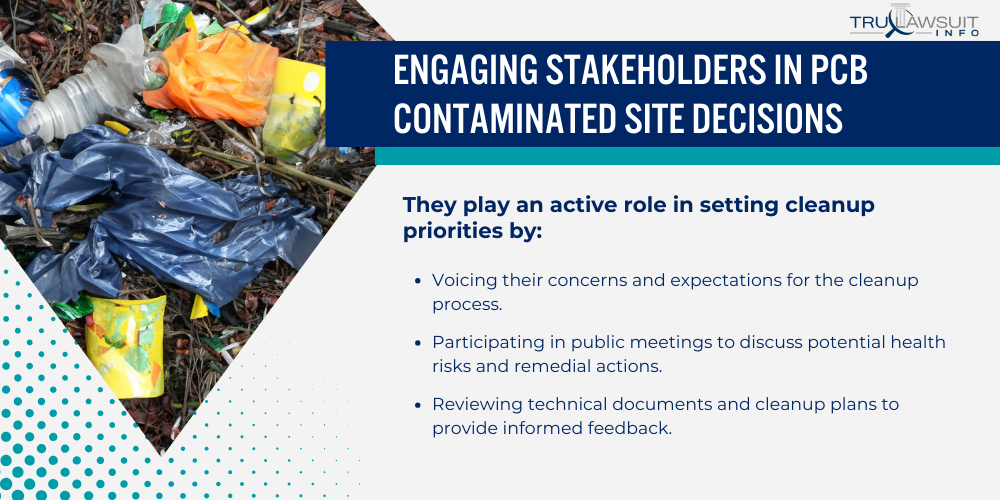
Effective stakeholder engagement ensures transparent decision-making and considers the priorities of affected communities.
Collaborating with Affected Communities Near PCB Contaminated Sites
Stakeholder engagement begins with identifying all the affected parties, including residents, local governments, and interest groups.
They play an active role in setting cleanup priorities by:
- Voicing their concerns and expectations for the cleanup process.
- Participating in public meetings to discuss potential health risks and remedial actions.
- Reviewing technical documents and cleanup plans to provide informed feedback.
- Partnering with regulatory agencies to monitor compliance and cleanup progress.
Incorporating Stakeholder Concerns into Cleanup Plans
To create effective cleanup plans for PCB-contaminated sites, regulatory agencies must:
- Listen to community concerns to understand the impact on local health and the environment.
- Explain the proposed remedial actions and any potential risks involved.
- Weigh community input against technical feasibility and regulatory requirements.
- Update cleanup strategies in response to stakeholder feedback, ensuring transparency at every stage.
Innovations in PCB Site Remediation Technologies & Strategies
Recent technological advancements for cleaning up polychlorinated biphenyls (PCBs) offer more efficient pathways to restoring environmental health and compliance with stringent regulations like the Toxic Substances Control Act.
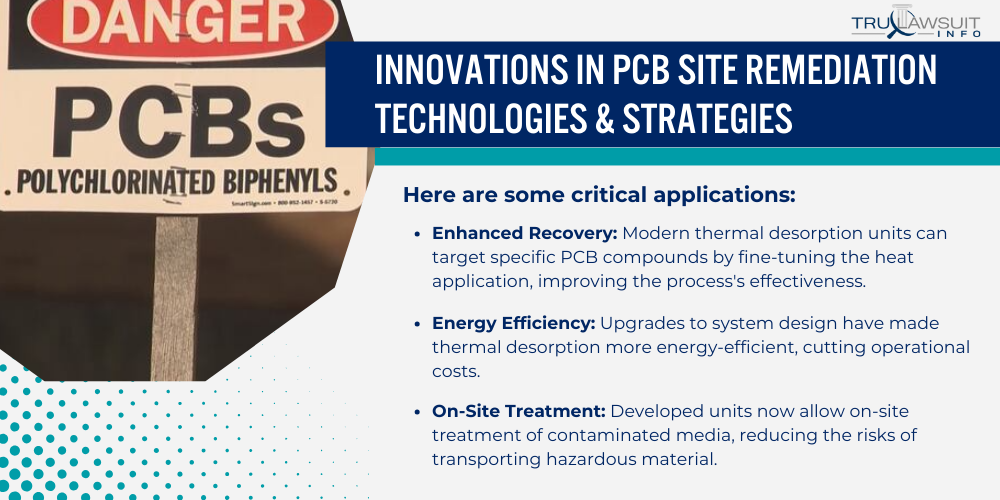
Advances in PCB Treatment Methods for Contaminated Media
Thermal desorption has emerged as a powerful method in treating soils and sediments laden with PCBs.
This technology involves heating the material to volatilize the contaminants, allowing for their safe capture and subsequent treatment or disposal.
Here are some critical applications:
- Enhanced Recovery: Modern thermal desorption units can target specific PCB compounds by fine-tuning the heat application, improving the process’s effectiveness.
- Energy Efficiency: Upgrades to system design have made thermal desorption more energy-efficient, cutting operational costs.
- On-Site Treatment: Developed units now allow on-site treatment of contaminated media, reducing the risks of transporting hazardous material.
- Customization: Systems can be tailored to handle varying contaminant concentrations, accommodating a wide range of site-specific conditions.
Phased Approaches and Adaptive Management of PCB Cleanups
A phased approach complemented by adaptive strategies is becoming more common in the management of PCB remediation projects.
This method involves an initial assessment followed by iterative cleanup actions that are adjusted based on ongoing results.
Here are the stages of this approach:
- Assessment: A thorough site investigation to determine the extent of PCB contamination and potential risks to environmental health.
- Pilot testing: Small-scale tests of selected remedies to evaluate effectiveness and guide the full-scale cleanup plan.
- Implementation: Carrying out the chosen remediation method, such as excavating PCB capacitors or treating affected media.
- Monitoring: Continuous evaluation of the cleanup’s progress and making necessary adjustments to the strategy.
Adaptive management is instrumental in addressing uncertainties, ensuring the remediation objectives are met effectively, and complying with environmental regulations.
Redevelopment of Remediated PCB Sites for Productive Reuse
The transformation of remediated PCB sites into productive assets requires careful planning and awareness of past contamination issues.
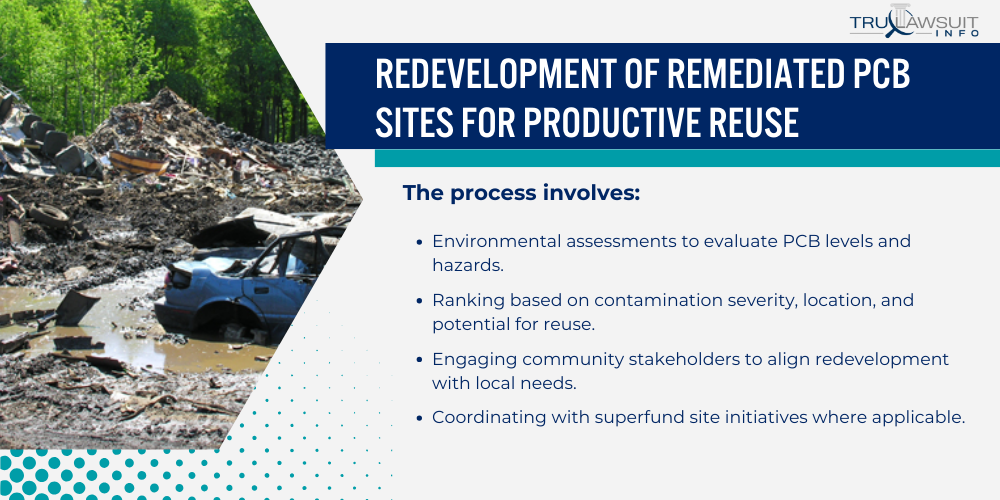
Once cleared of hazardous materials, these sites can be repurposed for community use, but they must be approached with thorough consideration of safety and regulatory guidelines.
Importance of Identifying & Prioritizing Contaminated Sites
Identifying and prioritizing former PCB-contaminated sites is the first step toward redevelopment.
Often laden with toxins from electrical transformers or building materials, these sites can pose significant health risks.
The process involves:
- Environmental assessments to evaluate PCB levels and hazards.
- Ranking based on contamination severity, location, and potential for reuse.
- Engaging community stakeholders to align redevelopment with local needs.
- Coordinating with superfund site initiatives where applicable.
These steps ensure a safe and strategic approach to land reuse.
Integrating Remediation with Site Revitalization Plans
To successfully transform a remediated site, site revitalization plans must integrate PCB remediation outcomes.
The following points illustrate this integration:
- Balancing environmental safety with redevelopment goals.
- Considering the site’s history with other electrical equipment to inform future use.
- Implementing post-cleanup sampling procedures to guarantee safety.
- Establishing deed restrictions or covenants as necessary.
Planners can determine the best future uses for these sites by considering where PCBs may have been used.
Successful Projects Returning PCB Sites to Safe, Beneficial Uses
Successful redevelopment of PCB-remediated sites shows that these areas can safely serve communities again with the right approach.
Successful projects demonstrate that:
- Former manufacturing zones can be transformed into parks or commercial centers.
- Old industrial sites can be repurposed for residential development with proper safeguards.
- Collaboration between local governments and developers is critical to attracting investment.
- Ongoing monitoring ensures continued occupational safety and compliance with environmental standards.
PCB-remediated sites can indeed be reclaimed to benefit society once more.
Frequently Asked Questions
-
What are typical applications that have led to PCB contamination?
Polychlorinated biphenyls (PCBs) were widely used in electrical devices, such as transformers, capacitors, and old fluorescent lighting fixtures, due to their ability to withstand high temperatures.
Other applications included hydraulic systems, heat transfer fluids, and additives in paints, plastics, and rubber products.
-
In which areas are PCBs most commonly found?
PCBs are most commonly found in industrial sites, old buildings, especially those constructed before 1980, and the environments surrounding landfills where PCB-containing materials were disposed of.
Aquatic ecosystems can also contain PCBs due to runoff from contaminated areas.
-
Through what means can humans become exposed to PCBs?
Humans can become exposed to PCBs by consuming contaminated food, mainly fish caught in polluted waters.
Exposure can also occur through inhalation of air containing PCBs inside older buildings or near hazardous waste sites and through skin contact with contaminated materials.
-
How does PCB toxicity impact human health?
PCB toxicity can lead to a range of health issues, such as skin conditions like chloracne and rashes.
Long-term exposure has been associated with immune system suppression, reproductive system disorders, and an increased risk of certain cancers.
-
What types of materials are typically contaminated by PCBs?
Materials typically contaminated by PCBs include products formerly manufactured with PCBs, like caulk and fluorescent light ballasts, and by-products of industrial processes such as soil, sediments, and waste oils.
-
How is PCB-contaminated waste identified and managed?
Identifying PCB-contaminated waste involves testing materials to determine the presence of PCBs.
This is often prompted by suspected use in manufacturing or a known release incident.
Regulations on containment, removal, and disposal govern the management of this waste.
Cleanups should incorporate environmentally responsible practices to minimize further contamination or exposure.

Experienced Attorney & Legal SaaS CEO
With over 25 years of legal experience, Jessie is an Illinois lawyer, a CPA, and a mother of three. She spent the first decade of her career working as an international tax attorney at Deloitte.
In 2009, Jessie co-founded her own law firm with her husband – which has scaled to over 30 employees since its conception.
In 2016, Jessie founded TruLaw, which allows her to collaborate with attorneys and legal experts across the United States on a daily basis. This hypervaluable network of experts is what enables her to share reliable legal information with her readers!
Have A Case?
Here, at Tru Lawsuit Info, we’re committed to helping victims get the justice they deserve.
To do this, we actively work to connect them with attorneys who are experts in litigating cases similar to theirs.
Would you like our help?
Tru Lawsuit Info is a reliable source of information about issues that may affect your health and safety, such as faulty products, data breaches, and environmental hazards.
Our team of experienced writers collaborates with medical professionals, lawyers, and advocates to produce informative articles, guides, and other resources that raise awareness of these topics.
Our thorough research provides consumers with access to reliable information and updates on lawsuits happening around the country. We also can connect consumers with attorneys if they need assistance.
Camp Lejeune's water contamination issue spanned several decades starting in the 1950s. Exposure to these chemicals has been linked to various serious health issues, including cancer, organ diseases, and death.
Research is increasingly suggesting a link between the use of Tylenol during pregnancy and the development of neurodevelopmental disorders, such as autism and ADHD, in infants.
Legal action is being taken against manufacturers of Aqueous Film-Forming Foam (AFFF), a chemical used in fighting fires. The plaintiffs allege that exposure to the foam caused health issues such as cancer, organ damage, and birth and fertility issues.
Have A Case?
Here, at Tru Lawsuit Info, we’re committed to helping victims get the justice they deserve.
To do this, we actively work to connect them with attorneys who are experts in litigating cases similar to theirs.
Would you like our help?

